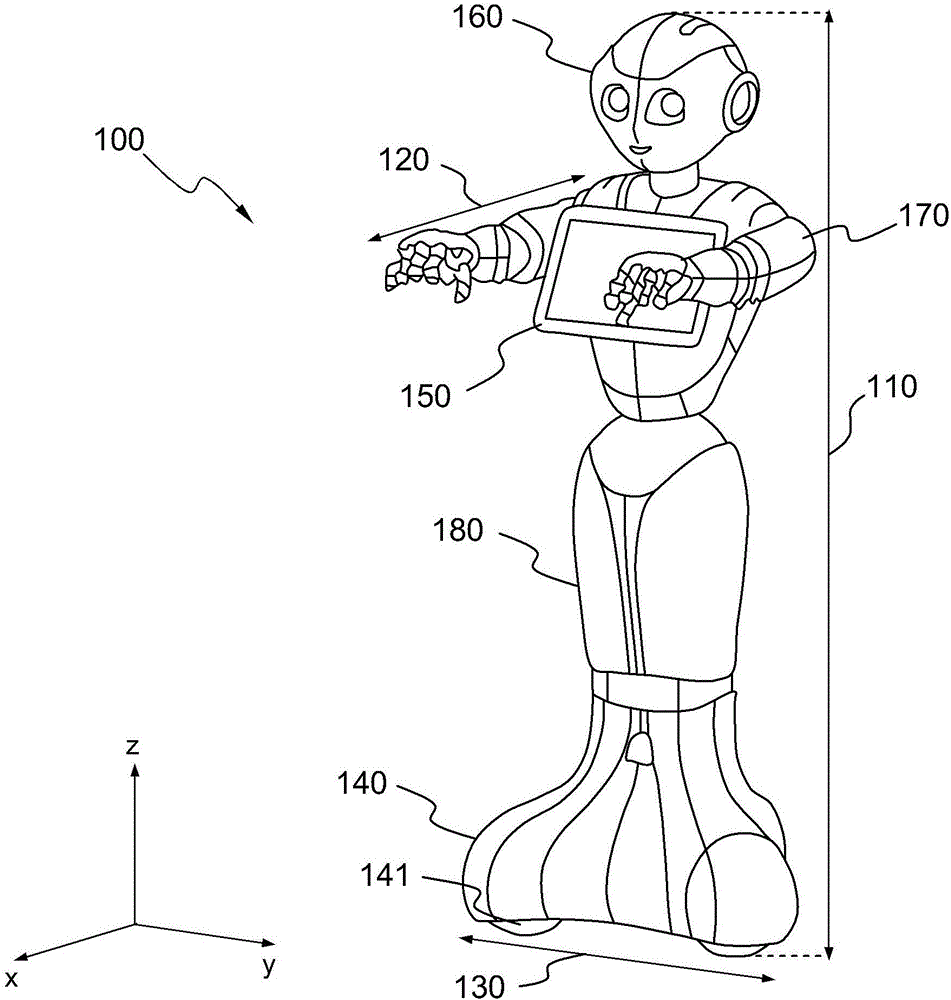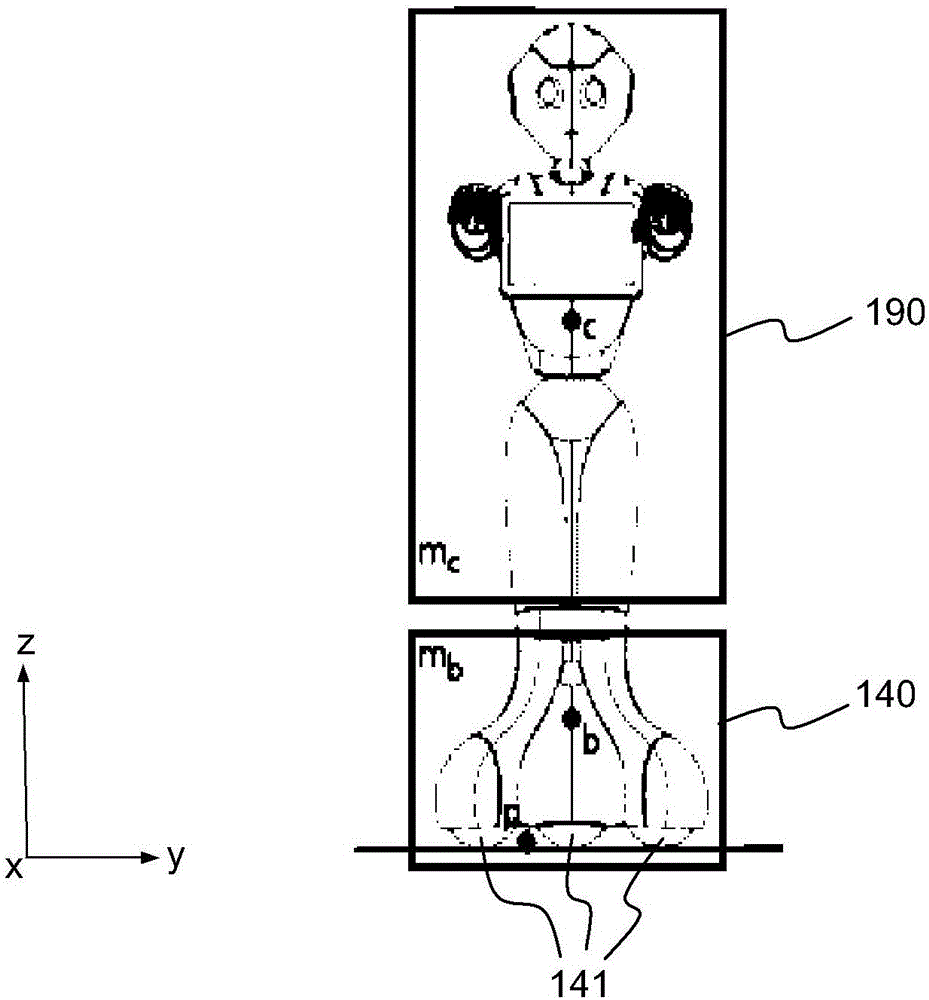Omnidirectional wheeled humanoid robot based on a linear predictive position and velocity controller
A robot and human-like technology, applied in the direction of vehicle position/route/height control, program control manipulator, attitude control, etc., can solve the problem of too large robot body required space
- Summary
- Abstract
- Description
- Claims
- Application Information
AI Technical Summary
Problems solved by technology
Method used
Image
Examples
Embodiment Construction
[0062] figure 1 The physical architecture of a humanoid robot in various embodiments of the invention is shown.
[0063] The particular robot 100 on the drawings is considered merely an example of a humanoid robot in which the invention may be practiced. The robot's lower limbs 180 are not functional for walking, but can move in any direction on its base 140, which rolls on the surface it rests on. For example, the robot may have a height 110 of about 120 cm, a depth 120 of about 65 cm, and a width 130 of about 40 cm. In a specific embodiment, the robot of the present invention has a tablet computer 150 by means of which the robot can transmit messages (audio, video, web pages) to its environment or receive input from the user through the tablet computer's tactile interface. In addition to the processor of the tablet computer, the robot of the invention also uses the processor of its own motherboard, which can be for example from Intel TM ATOM TM Z530. In a particular em...
PUM
 Login to View More
Login to View More Abstract
Description
Claims
Application Information
 Login to View More
Login to View More - R&D
- Intellectual Property
- Life Sciences
- Materials
- Tech Scout
- Unparalleled Data Quality
- Higher Quality Content
- 60% Fewer Hallucinations
Browse by: Latest US Patents, China's latest patents, Technical Efficacy Thesaurus, Application Domain, Technology Topic, Popular Technical Reports.
© 2025 PatSnap. All rights reserved.Legal|Privacy policy|Modern Slavery Act Transparency Statement|Sitemap|About US| Contact US: help@patsnap.com



